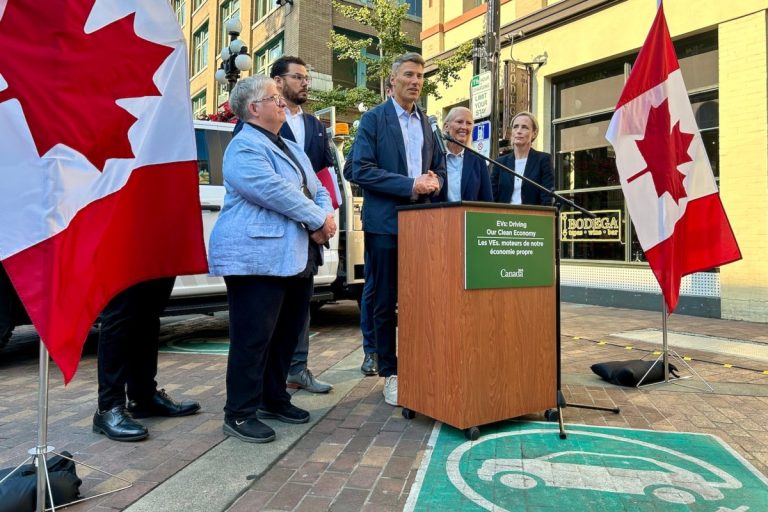Federal Government Invests $22.7 Million in BC EV Charging Infrastructure Amidst Growing Debate Over Mandates and Misinformation
VICTORIA, B.C. – Federal Housing and Infrastructure Minister Gregor Robertson announced a $22.7 million investment to bolster British Columbia’s electric vehicle (EV) charging network, adding 480 new stations across the province. This investment comes at a critical juncture, as public opinion on EV mandates appears to be shifting and concerns over charging infrastructure availability and vehicle affordability rise. Robertson’s visit to Victoria also served as a platform to address what he characterized as a deliberate campaign of “misinformation and propaganda” surrounding EVs, allegedly originating from the automotive and oil and gas industries. He condemned these efforts as “regrettable and immoral,” especially in the context of the intertwined challenges of affordability and climate change.
The federal government’s commitment to electrifying transportation is evident in its mandated sales targets for EVs: 20% by 2026, 60% by 2030, and 100% by 2035. British Columbia has adopted even more ambitious targets, aiming for 26%, 90%, and 100% respectively by the same deadlines. However, a recent Ipsos/Energy Futures Institute poll reveals growing public resistance to these mandates, coinciding with levelled-off EV sales. Leaked documents from B.C.’s Ministry of Energy and Climate Solutions suggest the provincial government is contemplating easing these mandates, acknowledging the difficulty of meeting the targets.
While the federal government champions the transition to EVs, critics like Barry Penner, chair of the Energy Futures Institute and former B.C. Liberal environment minister, argue that the government is “putting the cart before the horse.” He emphasizes the need for a significant expansion of charging infrastructure, estimating that B.C. requires an additional 40,000 charging stations by 2030 to support the projected EV uptake. Current figures show just over 5,000 stations in operation. Penner further criticizes the penalties imposed on dealers who fail to meet the sales mandates, arguing that this system unfairly benefits electric car manufacturer Tesla, a major source of credits, at the expense of other automakers.
Concerns about affordability also echo through the debate. B.C. Conservative Transportation critic Harman Bhangu shares Penner’s skepticism about achieving the mandate targets, citing the lack of charging infrastructure and the high cost of EVs as major barriers. He highlights the financial strain even for those with stable incomes, stating that even on an MLA’s salary, purchasing an EV is currently out of reach for many British Columbians.
However, proponents of EV adoption, like Glenn Garry, president of the Victoria Electric Vehicle Association, concur with Robertson’s assessment of industry-driven misinformation. Garry contends that auto dealers possess ample means to offset costs associated with mandate compliance, including investing in charging infrastructure. He attributes the industry’s shift in stance to the influence of former U.S. President Donald Trump’s anti-EV mandate rhetoric, suggesting that Canadian automakers are now mirroring this resistance. Furthermore, Garry downplays concerns about charging infrastructure scarcity, emphasizing that the majority of EV charging takes place at home, reducing the reliance on public charging stations.
Robertson acknowledges the need for increased charger availability, promising further announcements of similar investments across Canada. He emphasizes the government’s commitment to fostering Canadian jobs within the auto and battery sectors as part of this “aggressive” transition to EVs. Despite the ongoing debate and potential challenges, Robertson remains optimistic about the long-term growth and scaling of the EV industry, highlighting the importance of infrastructure development in supporting this transition.
The $22.7 million investment represents a significant step in expanding BC’s EV charging network. However, the conflicting perspectives on mandates, infrastructure readiness, and affordability underscore the complex challenges involved in transitioning to a fully electric transportation system. As the federal and provincial governments navigate these challenges, the focus remains on balancing ambitious climate goals with the practical considerations of consumer affordability and industry adaptation. The effectiveness of this investment and subsequent initiatives will depend on addressing these multifaceted issues to ensure a smooth and equitable transition to electric mobility.


